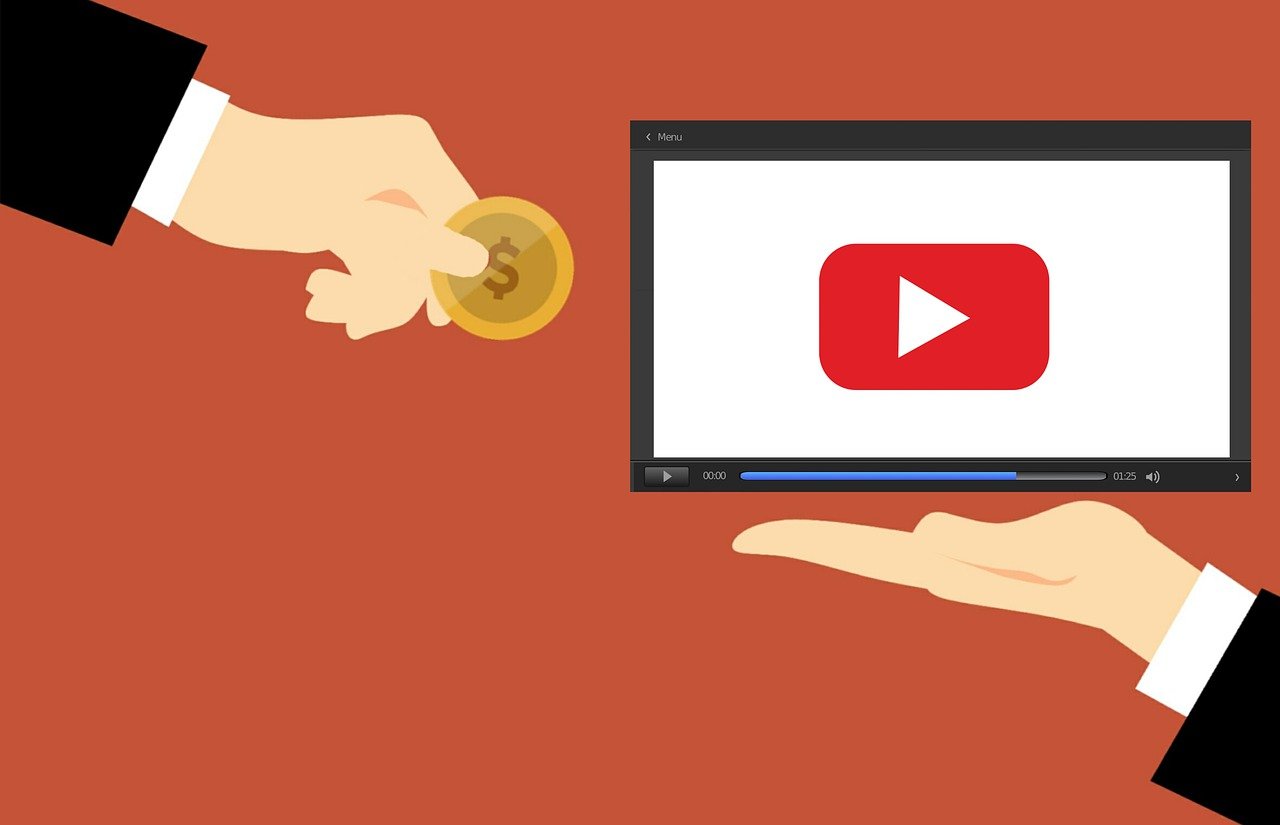In 2025’s hyper-competitive market landscape, new businesses face an overwhelming array of marketing channels, each promising to connect brands with their target audiences. The real challenge lies not in spreading efforts thinly across every platform, but in strategically identifying which channels to prioritize to maximize impact and return on investment. Successful brands understand that marketing is not just about visibility—it’s about meaningful engagement where decision-making genuinely happens. As emerging entrepreneurs navigate choices ranging from social networks like LinkedIn and Instagram for Business to tools like Google Ads and Mailchimp, crafting a laser-focused approach rooted in audience data, content relevance, and platform capabilities is critical. This article explores the essential factors brands must consider to pick the right channels for growth, enhanced by expert strategies, practical examples, and digital solutions designed specifically to help startups thrive in a crowded digital marketplace.
Understanding Your Target Audience to Prioritize Ideal Marketing Channels
New businesses often fall into the trap of using every available marketing channel, hoping to catch attention broadly without a clear understanding of their customer base. Instead, the foundational step in prioritizing marketing channels is a deep understanding of the target audience’s behaviors, preferences, and platforms they engage with most actively. As emphasized by marketing leaders, knowing “where your buyers are and what they engage with” allows entrepreneurs to channel their resources into the most effective spaces.
For instance, a B2B startup targeting enterprise clients would benefit from focusing on LinkedIn, where professional networking and content sharing flourish, rather than dispersing efforts across consumer-heavy platforms. Conversely, a lifestyle brand with visual products might find Instagram for Business and Facebook Business essential for showcasing imagery and video content. Quantitative tools like Google Ads provide valuable data on consumer search behaviors, while Mailchimp helps analyze email engagement to better segment and nurture leads.
Steps to Evaluate Your Audience’s Channel Preferences
- Data Analysis: Use analytics from platforms like HubSpot and Google Ads to track where traffic and conversions originate.
- Customer Surveys: Collect direct feedback to understand customer communication preferences and social media habits.
- Engagement Metrics: Monitor likes, shares, click-throughs, and time spent on different channels to gauge interest levels.
- Competitive Analysis: Study where competitors are most active and successful to identify possible gaps or opportunities.
- A/B Testing: Experiment with varying content forms on different platforms, adjusting strategy based on performance.
This targeted approach allows new businesses to prioritize fewer, high-impact platforms, preventing dilution of marketing messages and fostering deeper connections with key consumer segments. It’s also important to recognize the shifting digital attention, as audiences may move from established networks to emerging channels—which brands must monitor continuously to stay ahead.
| Marketing Channel | Best For | Key Features | Tools to Support |
|---|---|---|---|
| B2B, professional networking | Targeted ads, content sharing, employee advocacy | HubSpot, LinkedIn Sales Navigator | |
| Instagram for Business | Visual products, lifestyle brands | Photo/video posts, Stories, influencer marketing | Facebook Business, Buffer |
| Google Ads | Search intent, wide reach | Pay-per-click, keyword targeting, ROI analytics | Google Analytics, HubSpot |
| Mailchimp | Email marketing, customer retention | Segmentation, automation, personalized campaigns | CRM integrations, analytics dashboards |
| Facebook Business | Social engagement, diverse demographics | Ads, groups, events, audience insights | Hootsuite, Buffer |

Strategically Aligning Marketing Channels with Business Goals
Beyond knowing the audience, successful channel prioritization requires a clear focus on the business’s specific objectives. Different channels are better suited to varying goals such as brand awareness, lead generation, or customer retention. According to experts, new businesses must first define their core purpose for marketing to select platforms that deliver measurable impact toward these goals.
For example, a newly launched SaaS company aiming to establish credibility and generate qualified leads might prioritize LinkedIn and Google Ads for targeted campaigns. Alternatively, an ecommerce business focused on rapid customer acquisition may favor Shopify’s integrated marketing tools, Facebook Business, and Instagram for Business to create direct-to-consumer channels. This goal-driven channel selection fosters more effective resource allocation and messaging consistency.
Key Steps to Align Marketing Channels with Business Objectives
- Define Clear Goals: Identify whether the priority is increasing sales, brand recognition, or building a loyal customer base.
- Map Channels to Goals: Research which channels historically perform best for your goals within your industry.
- Develop Tailored Content: Customize messaging to fit the platform’s strengths and audience expectations.
- Implement Tracking Mechanisms: Use tools like Google Analytics and HubSpot to monitor progress and ROI.
- Refine Strategy Based on Data: Regularly adjust channel focus based on performance reports and market changes.
This strategic approach ensures your marketing campaigns on channels such as Constant Contact or Mailchimp do not merely increase traffic but nurture leads and convert prospects into customers effectively. For actionable guidance on launching your campaigns with clear priorities, consult resources like the Product Launch Checklist or create a solid marketing plan as detailed in this business planning guide.
| Business Goal | Recommended Channels | Example Tools | Typical KPIs |
|---|---|---|---|
| Brand Awareness | Instagram for Business, Facebook Business, Buffer | Hootsuite, Buffer, Facebook Insights | Impressions, reach, social shares |
| Lead Generation | LinkedIn, Google Ads, Mailchimp | HubSpot, Mailchimp, LinkedIn Ads | Conversion rate, click-through rate |
| Customer Retention | Mailchimp, Constant Contact | Email automation platforms | Open rates, repeat purchases |
| Sales Growth | Shopify, Google Ads, Facebook Business | Shopify analytics, Google Ads | Sales volume, revenue growth |
Examples of Goal-Driven Channel Success
A startup in the direct-to-consumer space used Shopify integrated with Facebook Business ads to scale its customer base rapidly, yielding an increase in sales by 40% within six months. Meanwhile, a consulting firm leveraged LinkedIn and HubSpot to generate qualified leads, improving close rates substantially by nurturing relationships through targeted email sequences using Mailchimp.
Leveraging Content Relevance and Message Fit Across Marketing Platforms
Once businesses identify the right channels for their audience and goals, the next critical factor is ensuring the message fits the platform’s nature and audience expectations. As marketing strategist Barnaby Pung notes, messaging must meet audiences “where they are” and be crafted specifically for each channel’s unique environment.
Different platforms favor different content types: Instagram for Business thrives on visually rich content such as carousels and stories, while LinkedIn demands more professional, insightful articles or thought leadership posts. Google Ads relies on succinct, search-intent-driven copy to capture immediate interest. Ignoring this nuance risks message dilution and missed engagement opportunities.
Principles for Crafting Platform-Specific Marketing Content
- Analyze Audience Behavior: Understand what type of content users prefer on each platform, such as video, text, or interactive formats.
- Use Platform Tools: Utilize each channel’s native tools, like Facebook Business’s event promotions or Buffer’s post scheduling to optimize delivery.
- Tailor Tone and Style: Match the brand voice to the audience, from casual and playful on Instagram to formal and knowledgeable on LinkedIn.
- Repurpose Intelligently: Adapt core messages for different formats without losing consistency or purpose.
- Test Content Variations: Perform A/B testing to discover what resonates best with your audience on each platform.
This content calibration amplifies the effectiveness of marketing efforts using tools like Hootsuite or Buffer to manage cross-channel posting schedules and analyze performance metrics. Proper message-channel alignment not only enhances reach but also deepens audience engagement.
| Marketing Channel | Preferred Content Types | Effective Messaging Style | Examples of Content |
|---|---|---|---|
| Instagram for Business | Stories, carousels, influencers posts | Visual, engaging, authentic | Behind-the-scenes videos, product showcases |
| Long-form articles, professional updates | Informative, authoritative, networking-focused | Industry insights, company culture posts | |
| Google Ads | Short, compelling text ads, keyword-driven | Clear, direct, focused on search intent | Promotions, service ads, call-to-action |
| Facebook Business | Event promotions, videos, community posts | Conversational, versatile, engagement-oriented | Live streams, contests, announcements |
Optimizing Marketing Efforts with Data-Driven Testing and Analytics
Prioritization is a dynamic process that requires a continuous feedback loop powered by data. Using A/B testing across platforms and analytic tools is fundamental for new businesses to identify what channels and messages maximize engagement, leads, and conversions.
For example, Vince Venditti emphasizes the importance of data-driven approaches—testing new platforms while maximizing established channels. Platforms like Google Ads provide comprehensive conversion tracking, while Hootsuite and Buffer support social media analytics. Email platforms such as Mailchimp and Constant Contact deliver campaign performance insights that help fine-tune mailing lists and content strategies.
Steps to Implement Data-Driven Channel Prioritization
- Set Clear KPIs: Define metrics such as click-through rates, conversion rates, or sales attributed to each channel.
- Conduct A/B Testing: Test different messages, images, or targeting groups to pinpoint high-performing content.
- Analyze Results Regularly: Use reports from HubSpot, Google Analytics, and other tools to track channel ROI.
- Adjust Budgets Accordingly: Allocate more resources to channels demonstrating strong performance and scale back on underperformers.
- Explore Emerging Channels: Remain agile by experimenting thoughtfully with new platforms that could represent untapped growth.
By adopting this analytics-driven mindset, startups ensure that their marketing channel mix continually evolves in step with audience behaviors and market dynamics, maximizing growth opportunities while optimizing expenditures.
| Testing/Analytics Tools | Best For | Key Features | Integration Examples |
|---|---|---|---|
| Google Analytics | Website traffic and conversion tracking | Goal funnels, e-commerce tracking, user segmentation | Google Ads, HubSpot |
| Mailchimp Analytics | Email campaign performance | Open rates, click-through rates, A/B testing | Shopify, CRM systems |
| HubSpot Marketing Analytics | Lead tracking and multi-channel analysis | Customer journey visualization, ROI reports | Google Ads, LinkedIn |
| Hootsuite Insights | Social media monitoring and scheduling | Sentiment analysis, engagement metrics | Facebook Business, Instagram for Business |

Balancing Established and Emerging Marketing Channels for Sustained Growth
While it’s tempting for startups to chase the newest, trendiest marketing platforms, balancing established channels with emerging ones provides the most sustainable growth opportunity. Industry veterans recommend maintaining a strong presence on proven platforms like Facebook Business and Google Ads while cautiously experimenting with newer options to capture early audience attention.
Scott Morris advises adopting a “test-and-learn” framework that combines reliable channel performance data with exploration of less saturated networks, optimizing the mix for maximum reach and engagement. This dual focus helps businesses tap into both mature audiences and pioneering communities, refining their marketing strategy in real time.
Strategies for Balancing Channel Portfolios
- Allocate Core Budget to Established Channels: Ensure steady audience engagement and brand consistency.
- Set Aside Resources for Emerging Platforms: Pilot campaigns to evaluate potential without overcommitting.
- Monitor Audience Shifts: Track where attention migrates to adapt strategies swiftly.
- Use Cross-Channel Tools: Employ platforms like Hootsuite or Buffer for unified management and reporting.
- Leverage Employee Advocacy: Encourage team members to promote authentic brand stories, especially on LinkedIn.
By fostering an adaptive mix of channels, new businesses increase their chances of consistently engaging customers throughout their buying journey—from increasing awareness and consideration to driving purchase decisions. Insights like these are further supported by comprehensive resources including marketing strategies for rapid growth and guides on developing entrepreneurial resilience for long-term success.
| Channel Type | Examples | Advantages | Risks |
|---|---|---|---|
| Established Channels | Facebook Business, Google Ads, Mailchimp | High reliability, proven ROI, large audiences | Market saturation, higher ad costs |
| Emerging Channels | TikTok, Clubhouse, niche forums | First-mover advantage, lower competition | Uncertain reach, less data available |
Frequently Asked Questions About Prioritizing Marketing Channels
- Q: How do I know which marketing channel will give the highest ROI for my startup?
A: Analyze audience data on platforms like HubSpot and use tools such as Google Analytics and Mailchimp to track engagement and conversion rates. Focus your budget where you see consistent and measurable results aligned with your business goals.
- Q: Should I focus on social media only or include email marketing?
A: A balanced approach is often best. Social media is great for brand awareness and engagement, but email marketing through platforms like Mailchimp or Constant Contact excels at nurturing leads and driving customer retention.
- Q: How can I effectively test new marketing channels without wasting budget?
A: Start small with A/B testing campaigns and monitor key metrics closely. Reserve a portion of your budget to experiment with emerging platforms, using data to decide whether to scale.
- Q: Is it better to be present on many channels or focus on fewer?
A: Quality over quantity matters. Prioritize channels where your audience spends the most time and engages deeply to maximize impact rather than being spread thin.
- Q: What role does employee advocacy play in channel prioritization?
A: It builds authentic connections and amplifies your brand credibility, especially on professional networks like LinkedIn. Encouraging employees to share content can be more effective than traditional brand messaging alone.

